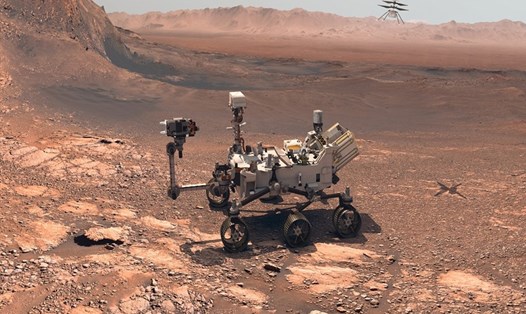The international research team concluded that a manned mission on Mars could be feasible if it lasted no more than 4 years, Phys.org said.
Bringing people to Mars requires scientists and engineers to overcome a series of technological and safety obstacles. One of them is the serious risk caused by particle radiation from the sun, distant stars and galaxies.
answering two important questions will help you overcome this barrier: Does hattional radiation pose a too serious threat to human life during the trip around the red planet? And when the Mars mission will take place, can it help protect astronauts and spacecraft from radiation?
In a new article published in the journal Space Weather, a group of international space scientists, including researchers from the University of California, Los Angeles (UCLA), answered the two questions as no and nay.
That means humans can get to and from Mars safely, provided the spaceship has enough cover and a return trip of about 4 years. And the time to carry out a human mission to Mars will really make a difference: Scientists determine that the best time for a flight off Earth will be when the sun's activity is at its peak, known as the maximum of the sun.
Calculations by scientists prove that spacecraft on Mars can now be protected from solar energy particles because during the maximum period of the Sun, the most dangerous particles and energy from distant galaxies will be disoriented by increased solar activity.
According to Yuri Shprits, a geophysicist from UCLA and author of the report, an average flight to Mars takes about 9 months, so depending on the launch time and available fuel, a manned mission can go to Mars and return to Earth in less than 2 years.
"This study shows that while space radiation puts strict limits on the weight of spacecraft and launch time, and causes technological difficulties for human missions to Mars, such a mission is feasible," said Shprits, who is also in charge of the space weather and space physics department at the GFZ Center for Geophysical Research indam pots, Germany.
Researchers suggest a mission of no more than 4 years because a longer journey would expos space travelers to dangerous levels of radiation throughout the trip - even if they were Assuming they were traveling at a relatively safe time than at other times. They also reported that the main danger to such a flight would be particles from outside our solar system.
Shprits and colleagues from UCLA, MIT, the Institute of Culture and Technology in Moscow and GFZ potsdam have combined geophysical models of particle radiation for a solar cycle with models of how radiation will affect humans including different effects on different organs of the body and spacecraft.
The model identifies that a spacecraft's shell made of relatively thick material could help protect astronauts from radiation, but if the shield is too thick, it could actually increase the amount of secondary radiation they are exposed to.
The two main types of dangerous radiation in space are solar energy particles and Galaxy cosmic rays; the intensity of each type depends on the activity of the sun.
The activity of the Galaxy's cosmic rays is the lowest within 6 to 12 months after the peak of the sun's activity, while the intensity of the largest solar energy particles during the maximum period of the sun.









